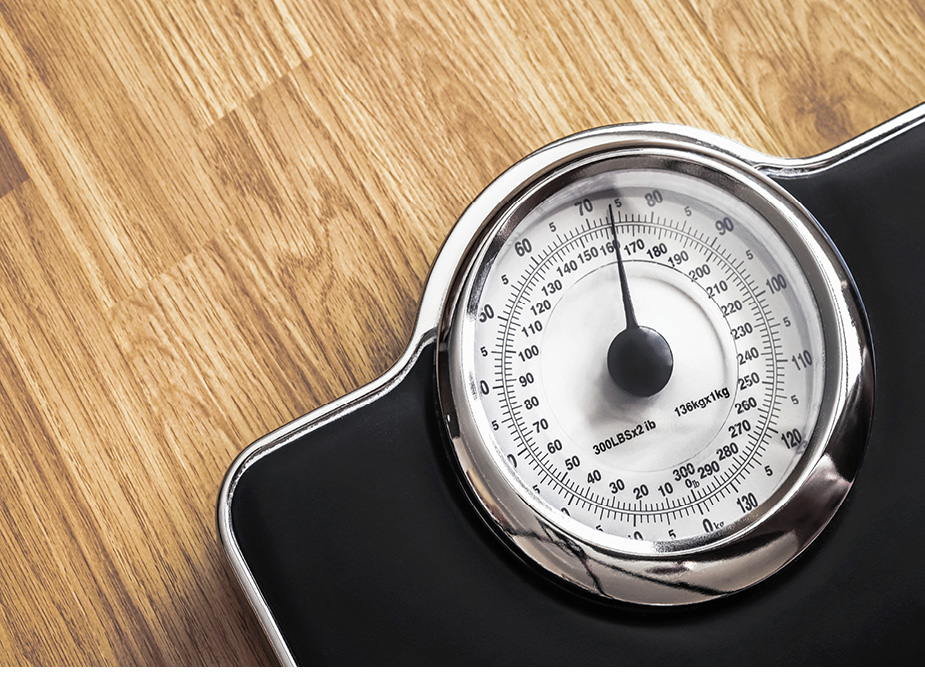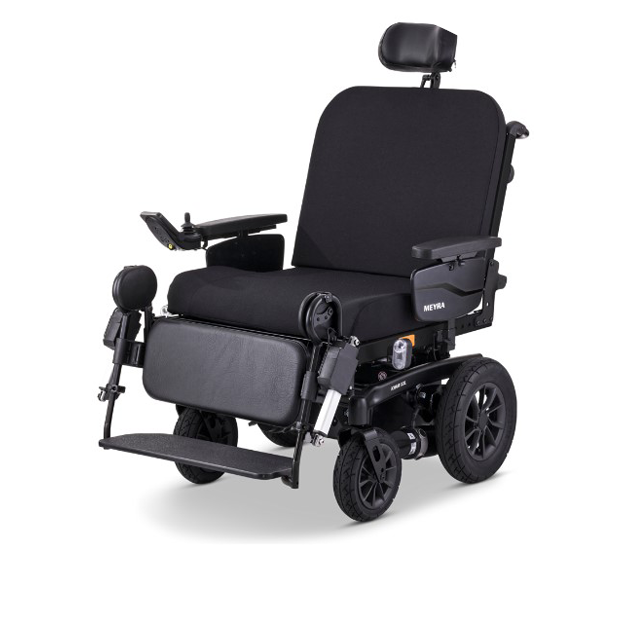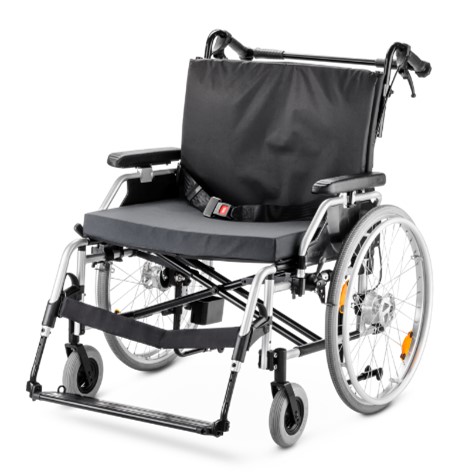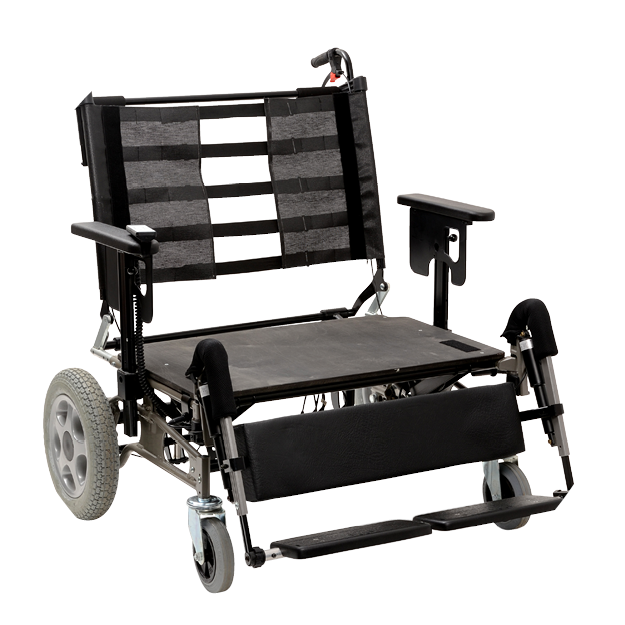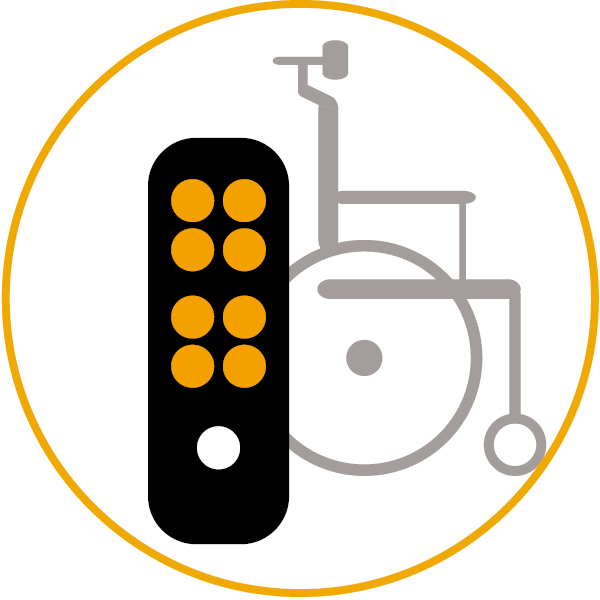Wheelchair provision in obesity: means to an end or end in itself?
“If they get a wheelchair, they’ll move even less!”
Don’t get me wrong, that is by no means my opinion. However, it seems to be the common view in the population and unfortunately also in some professional circles, if I interpret our research on the topic “How can we make wheelchairs for obesity fittings better? ” correctly.
The answer to this very question was: “Not at all. We have to motivate and guide these people to change their living conditions and their eating and exercise behaviour so that they lose weight and become more active. For this, providing them with a wheelchair is rather counterproductive. ”
The question I asked myself at that moment was, “Can you represent such an attitude? ”
An article by Harald Sieweke, physiotherapist and medical product consultant at Meyra GmbH.
Physical and psychological suffering in obesity
Obesity is often seen as the result of an unhealthy lifestyle, not as a serious disease. As a result, many people are inhibited and less likely to seek help.
However, depending on the distribution of fat, increasing obesity can lead to various health problems:
- Extreme shortness of breath and tendency to lung and bronchial diseases
- Cardiovascular problems
- Premature joint wear/arthritis and pain in the lower extremities and spine
- Circulatory disorders such as venous disorders, thrombosis, oedema (mainly increased water retention in the legs).
- Risk of decubitus/pressure ulcers and skin defects due to stagnant heat and moisture in the area of the skin flaps
- Hormonal disorders
Not only physically, but also the general well-being is reduced. Many people hardly ever leave their living environment over a long period of time. On the one hand, because of health problems of the cardiovascular system and the musculoskeletal system. On the other hand, however, also out of shame due to stigmatisation and exclusion; a condition that can lead to stress and mental illnesses (e.g. depression).
Definition obesity
A body weight that is above normal, caused by an excessive amount of fat. More energy is supplied to the body than it can use.
The Body Mass Index (BMI) serves as a guideline for the degree of obesity. According to the WHO classification, obesity exists from a BMI of 30 kg/m2.
You can find a BMI calculator here, for example: BMI calculator
Effective treatment for obesity
There are ways to actively train obese people while “decreasing heaviness”.
Exercise pool: There are now a wide variety of therapy and fitness programmes that are carried out in water. In water, only 1/6 of the body weight acts on the joints and in addition, the lymph drainage, venous return and metabolism are stimulated by the hydrostatic pressure.
Exercise trainers: Special endurance training devices train the legs and arms in a seated position without the body weight loading the joints or impacts acting on the joints. Some of these devices are even motor-supported in order to facilitate the movements at the beginning or to achieve a longer training duration.
Special training equipment: Medical training therapy has developed a lot in recent years. Many therapists and specialised medical training centres offer training on strength and endurance equipment specifically designed for exercisers with handicaps, joint damage and reduced general strength. This is usually done under therapeutic or sports science supervision with special training.
In the case of persistent or prolonged reduced walking ability, people must first be able to reach the places of treatment services. They also need to be motivated to be more active in the rest of their daily lives. Everyday movement is more difficult for them than for people of normal weight. In order to increase agility nevertheless, assistive devices are an important tool and offer a certain degree of help for self-help.
The wheelchair as an aid to locomotion
A suitable wheelchair as an aid to increase mobility gives an obese person the opportunity to move freely in the living environment, to attend therapy, to get to sporting activities and to remain as independent as possible in everyday life. Even a little more movement in everyday life has a positive effect on the cardiovascular system and has a motivating effect on top of that.
A wheelchair relieves the already painful knees, feet, hip joints and spine. Many of those affected only realize at a late stage that their mobility has gradually deteriorated and that they are already confronted with degenerative joint problems. As a result, the use of aids is comparatively late.
This leads to the key ideas in wheelchair provision for obese people:
- Mobilization by wheelchair to achieve personal/therapeutic goals
- Temporary relief of the joints and spine
- Promotion of independent, autonomous living and thus motivation to change life circumstances
- Self-determined participation in everyday life
Mobility is quality of life
Whether manual or electric, the wheelchair must be adapted precisely to the requirements and needs of the respective patient in order to support mobility performance in a goal-oriented manner. The distribution of fat on the body must be taken into account.
A rough distinction is made between two body shapes in obesity. The so-called pear and apple shape roughly illustrates this: The feminine (gynoid) type tends to have increased fat deposits in the area of the subcutaneous fat tissue on the thighs and buttocks, while the masculine (android) type shows increased fat deposits in the abdominal area and around the organs (visceral fat). The correct fit determines the usability of the wheelchair.

Through manually or electrically adjustable back, leg and edge positions, various areas of the body can be relieved; these settings can also be used to promote lymph and blood circulation.
Power wheelchair
If a user can no longer (re)position himself/herself independently in a manual wheelchair (i.e. electrical adjustments are necessary) and at the same time independent mobility in a manual wheelchair in the home environment is no longer guaranteed, a power wheelchair should be used. This enables obese persons to move and position themselves independently. In addition, independent mobility beyond the home environment is increased in order to make use of therapies or to perform activities of daily living, which are considered basic needs.
For all these decision criteria, specially trained advisors are available to you in the medical supply stores and in the specialist rehabilitation trade, who, in addition to the adjustment on the aid, also take into account your home environment and consider obstacles, door widths, etc. in order to adjust the fitting appropriately.
Manual wheelchair
These wheelchairs supposedly promise more activity for the user, as one moves around in them via the handrims or by tripping (propelling with both legs). However, independent locomotion, whether via the arms or the legs, is very challenging above a certain weight class and seat width. In addition, the handrim wheels increase the overall width. Such a fitting should be well weighed up and, if necessary, tested in advance. It also makes sense to look into a multifunctional wheelchair in this area.
Comfort wheelchair
Obese persons need to change their seating position more often in order to relieve pressure and prevent skin damage. In many cases a multifunctional wheelchair with back and tilt adjustment should therefore be considered. For bariatric users it is of high importance that the back and seat can be adjusted to different body shape, as many large users will experience problems with standard seating solutions.
In order to spare carers and family as much as possible, it may also be a good idea to consider chairs with electric tilt and recline function. This will also allow users to vary the sitting position themselves.
Additional to the advantages of the adjustable seat functions the height and angle adjustable leg rests on comfort chairs distribute and promote lymph and blood circulation. This is of high benefical value for obese persons as they often suffer on massive edema.
Postscript
We will not be able to achieve sustainable success if overweight people are prescribed wheelchairs with difficulty and ruin their joints on the way to weight reduction. How active and motivated will they be able to be if they continue to be handicapped due to gonarthrosis and coxarthrosis after 50 kg weight reduction. Let us work together, interdisciplinarily and sustainably to help people with obesity to live a more mobile, healthier and more worthwhile life. For this, however, we all need to speak the “same language”. Users, affected persons, relatives, care and therapy, specialised trade, cost units, medicine and industry.
Often it is not unwillingness, but lack of or faulty communication about goals and opportunities. See my article as a first step to improve this.
An article by Harald Sieweke, physiotherapist and medical product consultant at Meyra GmbH
Pictures: Netti and Meyra GmbH
Meyra Group suggested wheelchairs
Manual wheelchairs:
Meyra Eurochair XXL
Power wheelchairs:
Meyra iCHAIR XXL
Comfort wheelchairs:
Netti 4U CED XL
Netti III HD
Netti XHD
Netti XXHD
Netti 450F
Netti 450T
Active wheelchairs:
Meyra Avanti




